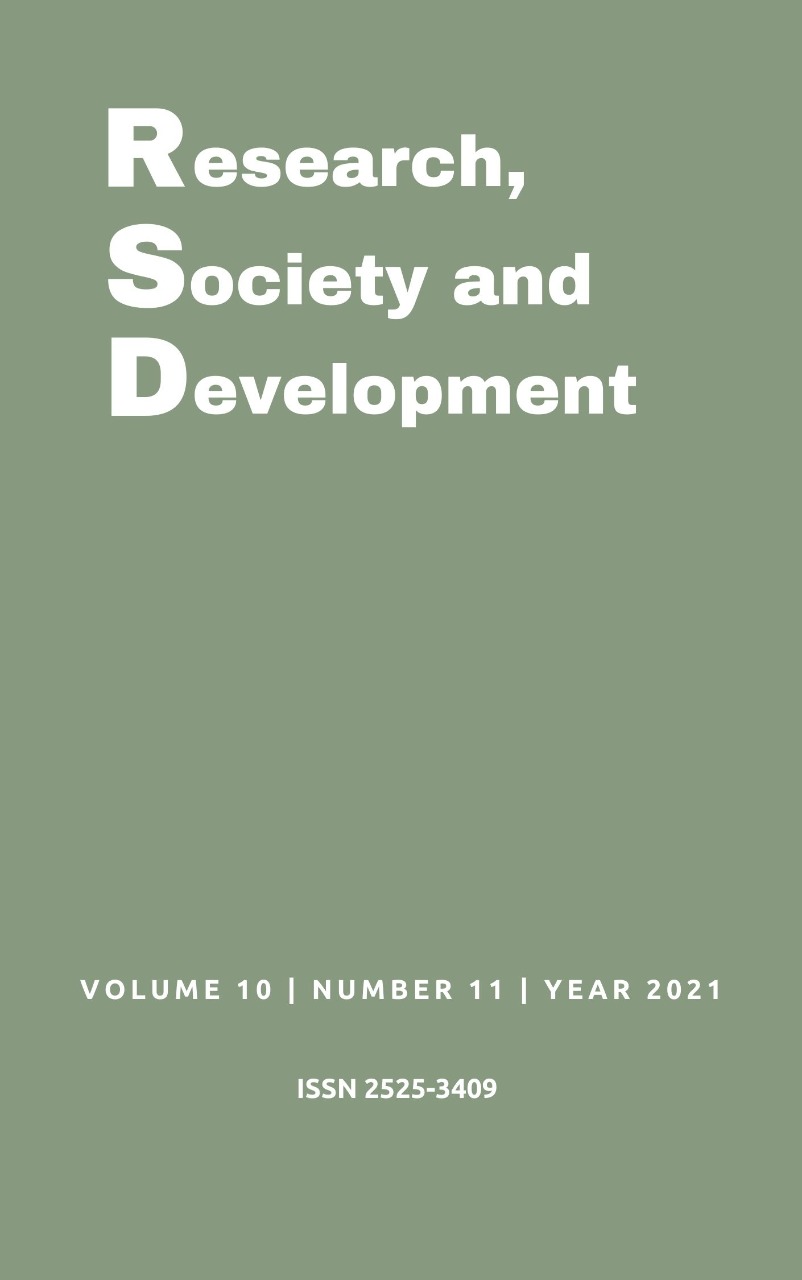Between resistance, advances and setbacks: a socio-historic overview of quilombola communities in Brazil and in the Cariri region of Cearense
DOI:
https://doi.org/10.33448/rsd-v10i11.20087Keywords:
Quilombola communities, Ceará, Cariri region, Quilombo sítio Arruda.Abstract
This article aims to discuss or conceive the quilombo in a historical and theoretical perspective through a literature review on or subject. As an object of investigation, the delimitation of the quilombola community council is linked since its origin in the African territory, its insertion in the Brazilian reality and, in this sense, with a non-state approach to Ceará and, more specifically, to the region. do Cariri Cearense, aimed at a specific quilombola community, or Sítio Arruda. We note that in its African constitution, or quilombo, it is a revolutionary social institution. However, the quilombos in Brazil were distancing themselves from the African model, building their own costumes. The concept of quilombo became synonymous with black people and should be understood as a framework for resistance and organization. From the 1970s onwards, two black social movements also developed or strengthened. This phenomenon, caused by changes arising from the 1988 Constitution, will be the result or restoration of the territory or territory of black communities. In the State of Ceará, a false idea of the absence of two blacks persisted. However, during the 1980s, a process of “discovery” of black groups began, evidencing the quilombola presence and not the State and the constitution of the black movement. Finally, from the constitution of the identity of the quilombola community of Sítio Arruda, we see that migration to the Cariri region of Ceará should be considered an important factor in the formation and consolidation of the local quilombola context.
References
Brasil (1988). Constituição da República Federativa do Brasil. Brasília, DF: Senado Federal: Centro Gráfico. https://www2.senado.leg.br/bdsf/bitstream/handle/id/518231/CF88_Livro_EC91_2016.pdf.
Brasil (2003). Decreto nº 4.887, de 20 de novembro de 2003. Regulamenta o procedimento para identificação, reconhecimento, delimitação, demarcação e titulação das terras ocupadas por remanescentes das comunidades dos quilombos de que trata o art. 68 do Ato das Disposições Constitucionais Transitórias. http://www.planalto.gov.br/ccivil_03/decreto/2003/d4887.htm.
Brasil (2021). Ministério do Turismo, Fundação Cultural Palmares. Portaria Nº 118. Revoga a Instrução Normativa Nº 1. https://www.in.gov.br/web/dou/-/portaria-n-118-de-31-de-maio-de-2021-323289079.
Corrêa, G. S. et al. (2020). A questão quilombola na conjuntura atual: Conflitos, desafios e r-existências. Revista da ANPEGE, 16, (29), 249 - 284. https://ojs.ufgd.edu.br/index.php/anpege/article/view/12509.
Cunha Júnior, H. 2013. Afrodescendência e Africanidades: Um dentre os diversos enfoques possíveis sobre a população negra no Brasil. Interfaces de Saberes, 1, 14-24.
Gil, A. C. (2017). Como elaborar projetos de pesquisa. 4.ed. São Paulo: Atlas.
Marques, C. E. E.; & Gomes, L. (2013). A Constituição de 1988 e a ressignificação dos quilombos contemporâneos: limites e potencialidades. Revista Brasileira de Ciências Sociais, 28, (81).
Moura, C. (2021). Quilombos: resistência ao escravismo. (5a ed.). Teresina: EdUESPI.
Moura, C. (1981). Os quilombos e a rebelião negra. (1ª ed.). São Paulo: Brasiliense.
Nascimento, M. B. (2018) [1985]. O conceito de quilombo e a resistência cultural negra. 1985. In: Beatriz Nascimento, Quilombola e Intelectual: Possibilidades nos dias da destruição. Maria Beatriz Nascimento. Diáspora Africana: Editora filhos da África.
Organização Internacional do Trabalho [OIT]. (1989). Convenção sobre Povos Indígenas e Tribais em Países Independentes [Convenção 169]. 27 jun. 1989. https://www.oas.org/dil/port/1989%20Conven%C3%A7%C3%A3o%20sobre%20Povos%20Ind%C3%ADgenas%20e%20Tribais%20Conven%C3%A7%C3%A3o%20OIT%20n%20%C2%BA%20169.pdf.
Querino, M. (2018). O colono preto como fator da civilização brasileira. Coleção Acervo Brasileiro. (2a ed.). Jundiaí: Cadernos do Mundo Inteiro.
Ratts, A. (1998). Os povos invisíveis: territórios negros e indígenas no Ceará. Cadernos CERU, 9, 109-127. https://doi.org/10.11606/issn.2595-2536.v9i0p109-127.
Ratts, A. (2011). O negro no Ceará (ou o Ceará negro). Artefatos da cultura negra no Ceará. Fortaleza: Edições UFC, 19-40.
Ratts, A. (2016). A diferença negra e indígena no território: observações acerca de Fortaleza e do Ceará. GEOSABERES, Revista de Estudos Geoeducacionais, 7, (12), 3-16, Universidade Federal do Ceará. https://doi.org/10.26895/geosaberes.v.7i12.527.
Santos, A. P. (2018). Educação Escolar Quilombola no Cariri Cearense: Africanização da Escola a partir de Pedagogias de Quilombo. Dissertação de Mestrado, Universidade Federal do Ceará, Fortaleza, http://www.repositorio.ufc.br/handle/riufc/33415.
Santos, A. P.; & Junior, H. A. C. (2019). Experiência educativa em comunidade quilombola Caririense: pedagogia de quilombo. Debates em Educação, 11, (23), 583-597.
Silva, M. E. (2017). História, memória e identidade quilombola no Cariri-cearense (Comunidades Sítio Arruda - Araripe e Carcará-Potengi. Dissertação de Mestrado, Universidade Federal da Paraíba, João Pessoa, PB, Brasil. https://repositorio.ufpb.br/jspui/handle/123456789/11901?locale=pt_BR.
Silva, S. P. S.; Santos, M. P.; C. J., Henrique; Bié, E. F.; & Silva, M. S. (Orgs). (2018). Afroceará Quilombola. Porto Alegre: Fi.
Tavares, G. O. (2020). Territorialidades e identidades Quilombolas em questão na Chapada do Araripe - Cariri, Ceará. Tese de Doutorado, Universidade de Brasília, Brasilia, DF, Brasil. https://repositorio.unb.br/handle/10482/40432.
Downloads
Published
Issue
Section
License
Copyright (c) 2021 Tayronne de Almeida Rodrigues; Francisca Laudeci Martins Souza; Zuleide Fernandes de Queiroz; Cicera Nunes

This work is licensed under a Creative Commons Attribution 4.0 International License.
Authors who publish with this journal agree to the following terms:
1) Authors retain copyright and grant the journal right of first publication with the work simultaneously licensed under a Creative Commons Attribution License that allows others to share the work with an acknowledgement of the work's authorship and initial publication in this journal.
2) Authors are able to enter into separate, additional contractual arrangements for the non-exclusive distribution of the journal's published version of the work (e.g., post it to an institutional repository or publish it in a book), with an acknowledgement of its initial publication in this journal.
3) Authors are permitted and encouraged to post their work online (e.g., in institutional repositories or on their website) prior to and during the submission process, as it can lead to productive exchanges, as well as earlier and greater citation of published work.


